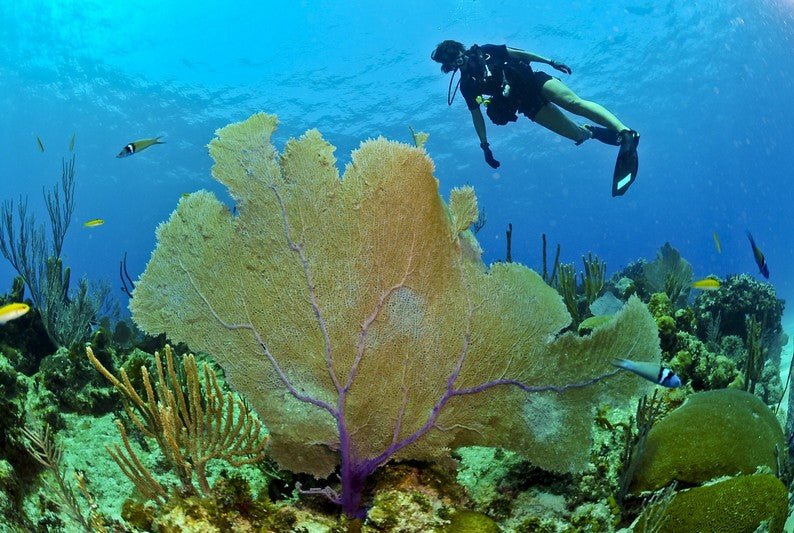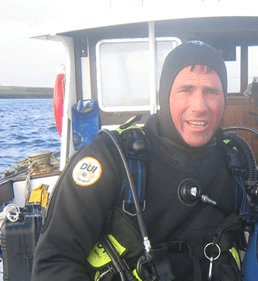
What Are The 5 Steps Diving?
Share

The 5 steps of diving are: Preparation which involves getting ready for the dive; entry which is entering the water in a safe and controlled manner; descent where a diver must begin descending to the desired depth; bottom time within no-decompression stop limits; ascent and exit after the dive.
The 5 steps of diving are:
- Preparation: This step involves getting ready for the dive by putting on the appropriate gear such as wetsuits, masks, fins, and tanks. It also involves checking the dive equipment to ensure it’s in good working condition.
- Entry: This step involves entering the water in a safe and controlled manner. The most common entry methods include giant stride entry, backward roll entry, and seated entry.
- Descent: Once in the water, the diver must begin descending to the desired depth. This involves equalising the pressure in the ears and mask, controlling buoyancy, and following proper diving techniques.
- Bottom Time: This step involves exploring the dive site while observing safety protocols such as monitoring air supply, depth, and no-decompression stop limits. It also involves avoiding contact with marine life, respecting the environment, and adhering to dive plans.
- Ascent and Exit: After the dive, the diver must safely ascend to the surface and exit the water. This involves managing the ascent rate, safety stops, and clearing any water from the mask and ears. Once back on shore or the dive boat, the diver should remove their gear and log the dive details.
Five point ascent and descent
Ascent and descent in diving are critical skills that require proper training and execution to ensure the safety of the diver. Here are the five-point ascent and descent:
Five-point descent:
- Equalise ears and mask: As a diver descends, the pressure in the water increases, and this can cause discomfort or pain in the ears and mask. Equalizing helps to balance the pressure and prevent injuries.
- Monitor depth: It’s important to keep track of the depth as a diver descends to prevent exceeding safe limits.
- Control buoyancy: Buoyancy control allows the diver to maintain a stable position in the water and conserve energy while descending.
- Check equipment: During the descent, it’s important to check that all equipment is working correctly, including the dive computer, regulator, and other accessories.
- Follow the dive plan: Following the dive plan is critical to ensure that the dive is safe and enjoyable. It includes factors like the maximum depth, bottom time, and ascent rate.
Five-point ascent:
- Monitor depth: Like during descent, monitoring the depth is essential during the ascent to prevent ascending too quickly.
- Control buoyancy: Buoyancy control helps the diver to maintain a safe and comfortable ascent rate.
- Safety stop: A safety stop at a depth of 5 meters (15 feet) for 3-5 minutes allows excess nitrogen to escape from the diver’s body, reducing the risk of decompression sickness.
- Ascend at a safe rate: Ascending at a rate of 9 meters (30 feet) per minute is recommended to prevent decompression sickness.
- Surface signalling: Once at the surface, it’s important to signal to the surface support team that the dive is complete and communicate any issues or concerns.
What is PADI 5 point ascent descent?
PADI, or the Professional Association of Diving Instructors, is one of the world’s leading organizations for scuba diving training and certification. The PADI 5 Point Ascent Descent is a set of guidelines designed to help scuba divers safely descend and ascend during a dive.
The PADI 5 Point Ascent Descent guidelines are as follows:
- Equalise early and often: This means starting the process of equalizing the pressure in your ears and mask as soon as you begin your descent, and continuing to do so every few feet until you reach your desired depth.
- Descend feet first: Descending feet first helps to control the descent rate and allows you to equalize more easily.
- Descend slowly: Descend at a rate of 60 feet per minute or slower to avoid injury and give your body time to adjust to the increased pressure.
- Check your depth frequently: Monitoring your depth during the descent helps you to stay within safe limits and avoid exceeding your planned maximum depth.
- Stop if you feel discomfort: If you experience any discomfort or pain during the descent, stop your descent immediately and try to equalize again. If the discomfort persists, signal to your dive buddy or instructor and abort the dive.
Similarly, for the ascent, the PADI 5 Point Ascent guidelines are:
- Ascend slowly: Ascend at a rate of 30 feet per minute or slower to prevent decompression sickness.
- Perform safety stops: Make a safety stop at 15 feet for three minutes to allow excess nitrogen to escape from your body.
- Check your depth frequently: Monitoring your depth during the ascent helps you to maintain a safe ascent rate and avoid ascending too quickly.
- Control your buoyancy: Proper buoyancy control helps you to maintain a stable ascent rate and avoid injuries.
- Surface slowly: Once you reach the surface, continue to breathe normally and ascend slowly to prevent injuries and dizziness.
What are the five steps in a pre dive safety check?
A pre-dive safety check, also known as a buddy check, is a critical step in scuba diving to ensure that all equipment is properly set up and in good working order. It is recommended that every diver perform a pre-dive safety check before each dive.
The five steps in a pre-dive safety check are commonly known by the acronym B.W.R.A.F.
- BCD: Check the Buoyancy Control Device (BCD) for proper fit, function, and inflation/deflation by inflating it fully and deflating it completely.
- Weights: Ensure that you have the correct amount of weights for the dive and that they are securely fastened to the weight belt or integrated weight system.
- Releases: Check all releases on the BCD, weight belt, and any other equipment, making sure they are working properly.
- Air: Check that the air tank is secure and the regulator is properly attached and functioning, ensuring that the gauge shows the correct amount of air and that you have enough for the dive.
- Final check: Perform a final check of all equipment, including mask, fins, snorkel, and any other accessories, ensuring that everything is in good working order.
By performing a pre-dive safety check using the B.W.R.A.F. acronym, divers can reduce the risk of equipment-related accidents and increase safety while underwater.
I hope you enjoyed this article about what are the 5 steps diving?
I’d love to hear from you. Tell us about your adventures of diving and snorkelling. Please use the comments section below. Please also share your photos. Either from your underwater cameras or videos from your waterproof go-pro’s!
If this article hasn’t answered all of your questions. If you have more questions either about snorkelling or scuba diving (or specifically about what are the 5 steps diving), please comment below with your questions.
There will also be many more articles about scuba and scuba diving safety tips (and on snorkelling too) for you to read and learn about this fabulous sport.
Have fun and be safe!
